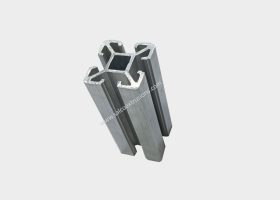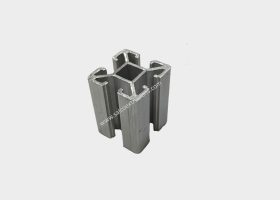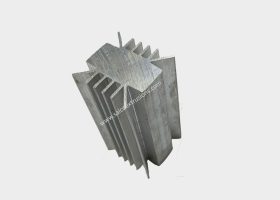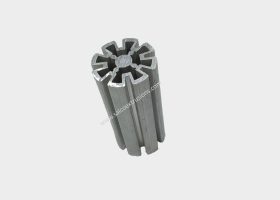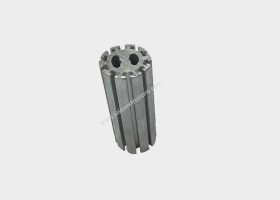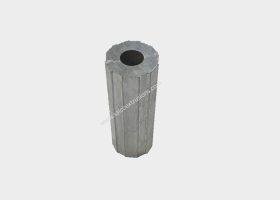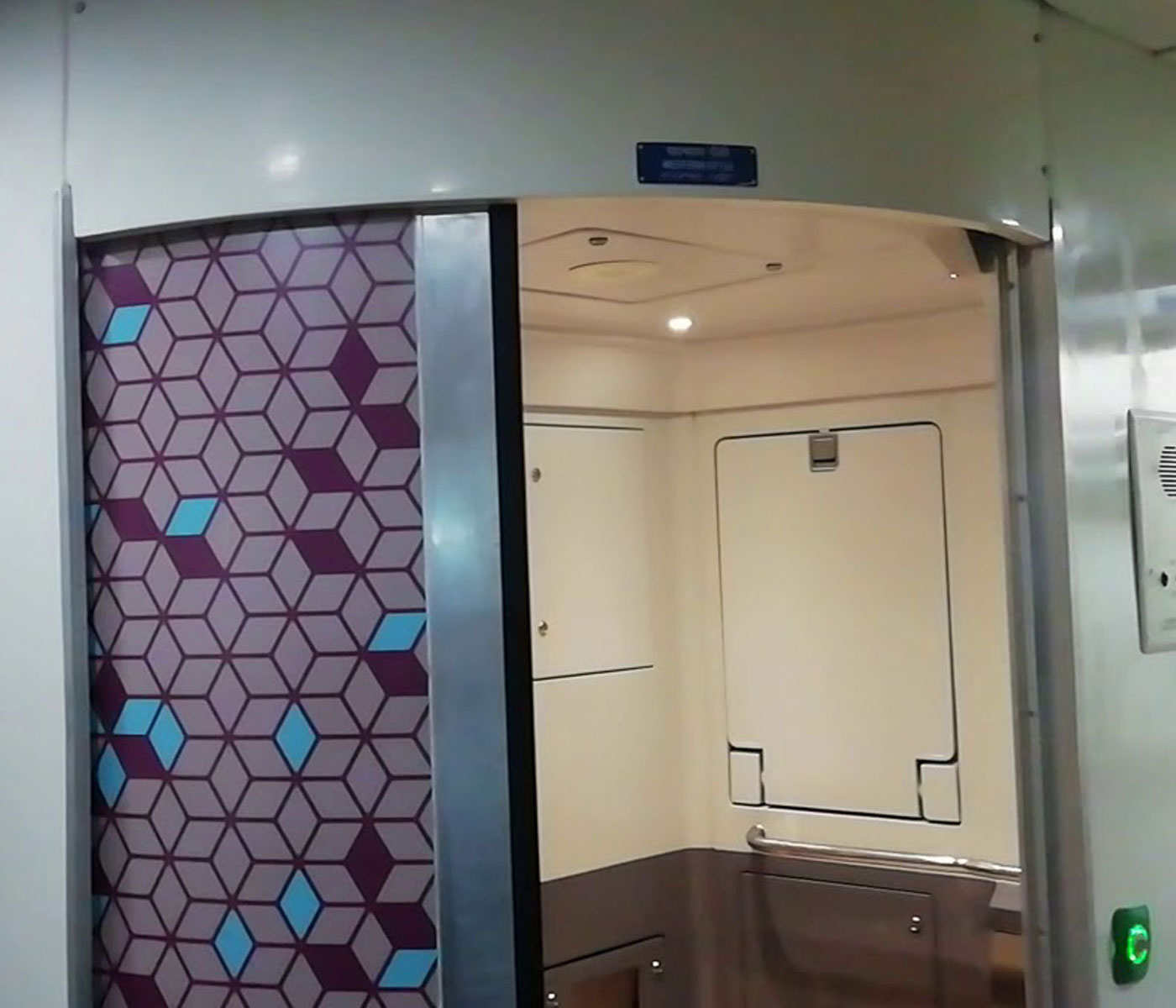
Aluminum Extrusions for Railway
Driving the Future of Lightweight and High-Speed Rail Transport
In a world increasingly focused on sustainable mobility and efficient transportation, the railway sector stands at the forefront of innovation. As trains become faster, safer, and more energy-efficient, the materials used in their construction must evolve to meet these advancing demands. One such material that has gained prominence is aluminum—specifically, aluminum extrusions for railway applications.
Lightweight, strong, corrosion-resistant, and infinitely recyclable, aluminum extrusions are playing a transformative role in modern railway systems. From metro cars and high-speed trains to freight wagons and railway infrastructure, extruded aluminum components are now essential to both rolling stock and rail network construction.
What Are Aluminum Extrusions for Railway?
Aluminum extrusion is a manufacturing process where a billet of aluminum is heated and forced through a die to create a continuous profile with a specific cross-section. These profiles can range from simple shapes like tubes and angles to complex geometries tailored for specialized applications.
In the railway industry, these extrusions are used to manufacture a wide variety of components including:
-
Car body shells
-
Window frames
-
Door structures
-
Roof and floor panels
-
Interior trims
-
Cable ducts
-
Structural profiles in wagons and locomotives
The ability to produce customized, lightweight, and robust profiles makes aluminum extrusions for railway applications a game-changing solution for manufacturers and designers.
Why Use Aluminum Extrusions in Railway Systems?
1. Lightweight for Energy Efficiency
One of the most significant advantages of aluminum extrusions is their lightweight nature. Aluminum has only one-third the density of steel, which results in substantial weight savings. In a sector like railway—where mass directly affects energy consumption—every kilogram saved leads to reduced fuel usage or lower electrical power demand.
This is especially crucial in high-speed rail and metro systems, where acceleration, deceleration, and energy efficiency are directly influenced by the train’s weight.
2. High Strength and Structural Integrity
Modern aluminum alloys, especially 6000 and 7000 series, provide excellent mechanical strength. Extruded profiles can be designed to provide rigidity, impact resistance, and fatigue durability that meet or exceed those of steel in many structural applications.
Aluminum extrusions are also capable of forming large integral structures, such as full sidewalls or floor panels, reducing the need for multiple joints and improving the overall structural strength of the train.
3. Corrosion Resistance
Railway vehicles operate in varied and often harsh environmental conditions—from coastal humidity and acid rain to snow, ice, and de-icing chemicals. Aluminum’s natural oxide layer protects it from corrosion, significantly extending the service life of extruded components and reducing maintenance costs.
4. Crashworthiness and Safety
Safety is paramount in rail transport. Aluminum extrusions can be designed to absorb and dissipate energy in the event of a crash. Crash management systems, crush zones, and buffer beams made from aluminum are engineered to deform predictably under impact, protecting passengers and critical systems.
5. Design Flexibility and Customization
The extrusion process allows complex, multi-functional profiles to be created with high precision. This enables engineers to:
-
Integrate channels for wiring and HVAC
-
Build in fastening mechanisms
-
Combine multiple parts into a single profile
-
Tailor cross-sections to specific aerodynamic or aesthetic needs
This design versatility reduces the number of components, shortens assembly time, and enhances the visual appeal of the final product.
6. Sustainability and Recyclability
Aluminum is 100% recyclable without degradation of properties. Recycling aluminum uses only 5% of the energy required to produce primary aluminum. With rail being one of the most sustainable modes of mass transit, using recyclable aluminum reinforces its environmental benefits and aligns with global sustainability goals.
Applications of Aluminum Extrusions in the Railway Industry
✅ Car Body Structures
Aluminum extrusions are widely used in the construction of train car bodies, including:
-
Side panels
-
Roof panels
-
Floor panels
-
End frames
Using large hollow or solid profiles, manufacturers can create integrated car bodies that are lighter, structurally rigid, and aerodynamically optimized.
✅ Doors and Windows
Sliding and plug doors, window frames, and door thresholds are often manufactured using custom aluminum extrusions. These parts require dimensional accuracy, smooth finishes, and long-term durability—qualities that extruded aluminum provides reliably.
✅ Interior Components
From ceiling panels and luggage racks to seating frameworks and partition walls, aluminum extrusions are commonly used inside railcars for their aesthetic and lightweight properties. They can be easily anodized or coated to match the interior design of modern trains.
✅ Crash Management Systems
Energy-absorbing components like crash boxes, anti-climbers, and front-end modules use aluminum extrusions for their predictable deformation behavior during impacts. These extrusions are designed to collapse in a controlled manner, minimizing injury risk and damage.
✅ Underframe Equipment Mounting
Aluminum extrusions serve as support structures for mounting HVAC units, battery boxes, and other undercarriage systems. Their corrosion resistance and ability to support dynamic loads make them suitable for this demanding environment.
✅ Railway Infrastructure
Aluminum extrusions are not limited to rolling stock. They’re also used in:
-
Platform edge doors
-
Signage and lighting systems
-
Cable management systems
-
Signal enclosures and control cabinets
-
Canopies and structural frames in stations
Aluminum vs. Steel in Rail Applications
While steel has historically been the dominant material in rail manufacturing, aluminum has gained traction for several reasons:
| Property | Aluminum | Steel |
|---|---|---|
| Weight | ~1/3 the weight of steel | Heavy |
| Corrosion Resistance | Excellent | Requires coatings or maintenance |
| Strength-to-Weight | High | Very high |
| Fabrication | Easier to machine and extrude | More difficult and heavier |
| Recyclability | 100% recyclable | Also recyclable but more energy-intensive |
| Cost | Higher material cost, lower lifecycle cost | Lower initial cost, higher lifecycle maintenance |
Challenges and Considerations
Despite its advantages, using aluminum extrusions for railway does come with some challenges:
-
Thermal Expansion: Aluminum has a higher coefficient of thermal expansion than steel, which needs to be considered in design.
-
Joining Techniques: Welding aluminum requires specialized methods (like TIG or friction stir welding), and dissimilar metal joining (e.g., aluminum to steel) must avoid galvanic corrosion.
-
Cost: While aluminum can be more expensive upfront than steel, the lifecycle cost—factoring in weight reduction, maintenance savings, and recyclability—is often lower.
Future Trends in Aluminum Extrusions for Railway
🚄 High-Speed and Maglev Trains
The demand for ultra-light, aerodynamically efficient train bodies is pushing aluminum extrusion technology to new limits. Manufacturers are investing in large cross-section extrusions and hybrid composite-aluminum solutions for maximum performance at high speeds.
🌱 Sustainable Rail Systems
With global focus on net-zero emissions, aluminum’s recyclability is a major advantage. Many OEMs now seek closed-loop recycling partnerships with suppliers to further reduce environmental impact.
🔧 Modular Train Design
The modular approach to train building allows for faster customization and upgrades. Aluminum extrusions support this through quick-connect framing, interchangeable panels, and integrated design solutions.
🧠 Smart Integration
Modern trains are increasingly connected. Extruded profiles now incorporate channels and spaces for wiring, data systems, sensors, and lighting—making them more than just structural elements.
Conclusion: The Future Rides on Aluminum Extrusions for Railway
As railway systems evolve to meet the demands of speed, safety, efficiency, and sustainability, aluminum extrusions for railway applications are proving to be a fundamental building block of this transformation.
From enhancing fuel efficiency and passenger comfort to reducing maintenance costs and environmental impact, aluminum extrusions offer unmatched advantages across every aspect of railway design and construction.
Whether you’re an OEM designing next-gen high-speed trains, an infrastructure developer building smarter stations, or a component supplier seeking innovation—aluminum extrusions provide the performance, flexibility, and future-readiness that modern rail demands.
Interested in learning more or sourcing aluminum extrusions for your railway project? Collaborate with an experienced extrusion manufacturer who understands the technical, regulatory, and performance standards of the rail industry.
